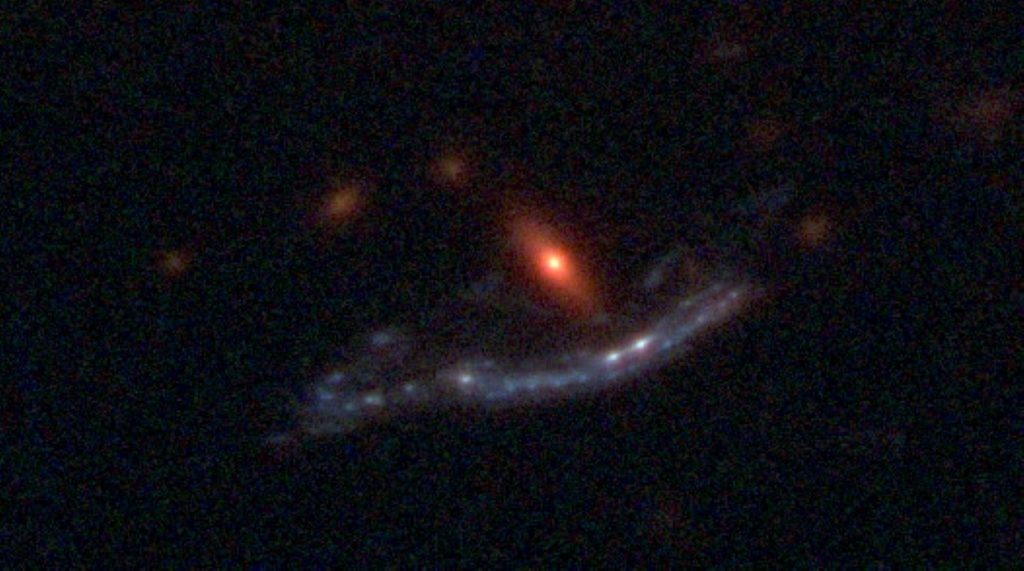Making The Nearly Invisible, Visible: Astronomers Trace Gas That Breathes Life Into Galaxies
Using a new method to see massive, yet barely visible, gas tanks that fuel the formation of stars, astronomers with the aid of a Big Island observatory created the first ever spatial maps of the enormous gas clouds that birth galaxies.
Astronomers have developed a groundbreaking new method of seeing the massive, but barely visible gas tanks that fuel star formation. Using the new technique, a North Carolina State University-led team at the W.M. Keck Observatory atop Maunakea was able to shed new light on galactic evolution in the young universe.
Their study was recently published in an online issue of the journal Nature.
The astronomers used the Keck Observatory to map a pair of ancient, nearly 11-billion-year-old neutral hydrogen clouds, measuring their size, mass and density. Known as Damped Lyman-α systems, or DLAs, these reservoirs of primitive gas filled most of the early universe. With time, gravity pulled the gas into clouds that slowly condensed to create some of the earliest galaxies and stars.
DLAs are still observable today, but detecting them with traditional methods is challenging.
“DLAs are a key to understanding how galaxies form in the universe, but they are typically difficult to observe since the clouds are too diffuse and don’t emit any light themselves,” Rongmon Bordoloi, assistant professor of physics at NC State and lead author of the study, said in a press release.
Since gas becomes more visible when it is in front of something bright, astrophysicists have used quasars – distant, supermassive black holes that unleash powerful jet streams of energy – as a “backlight” to detect DLA clouds. But light from quasar jets only illuminate pencil-thin beams through the gas clouds.
“This technique has been used for decades, and has taught us a lot,” John O’Meara, chief scientist at Keck Observatory and co-author of the study, said in the release. “But it’s like being blind and touching the tail of an elephant—you have no idea what the rest looks like.”
Bordoloi and O’Meara’s team came combined the latest advances in integral field spectroscopy with a phenomenon that acts as nature’s magnifying glass. Using the Keck Cosmic Web Imager, the astronomers located and measured two DLA systems that were backlit by a very distant, gravitationally lensed galaxy.
“Gravitationally lensed galaxies refer to galaxies that appear stretched and brightened. This is because there is a gravitationally massive structure in front of the galaxy that bends the light coming from it as it travels toward us,” Bordoloi explained in the press release. “So we end up looking at an extended version of the object. It’s like using a cosmic telescope that increases magnification and gives us better visualization.”
The findings show both DLAs are colossal; they’re nearly as large as the Milky Way. It would take light about 56,723 years to complete a one-way journey across these gaseous giants.
“With this new technology at our disposal, we are going to be able to dig deeper into how stars formed in the early universe,” Bordoloi said in the press release.
“This is the culmination of my work investigating star forming gas in the universe,” O’Meara said. “I’ve been playing the quasar game for a quarter-century, but now I can do it right by looking at how DLAs vary within a single structure, not statistically. It’s a new age for studies like this.”
For more information about the W.M. Keck Observatory, click here.
Sponsored Content
Comments









